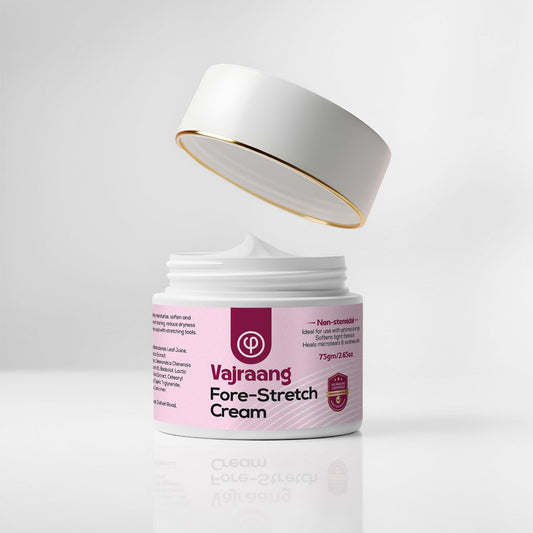I Just Found Out I Have Phimosis—Where Do I Start?
Finding out you have phimosis—a condition where the foreskin doesn’t retract properly—can be concerning, but here’s the good news: it’s common, manageable, and treatable in most cases without surgery. With the right approach and consistency, you can restore foreskin mobility and regain comfort. Let’s break down what phimosis is, why it happens, and the best way to start your treatment journey.
What Exactly Is Phimosis?
Phimosis occurs when the foreskin is too tight to retract over the glans (head of the penis) due to a restrictive phimotic band. The severity can vary from mild tightness to a complete inability to retract the foreskin.
Types of Phimosis:
✔ Mild Phimosis: The foreskin retracts partially but feels tight.
✔ Moderate Phimosis: Retraction is difficult, even when flaccid.
✔ Severe Phimosis: The foreskin does not retract at all, leading to discomfort during urination or intimacy.
👉 Understanding the Phimotic Ring: The Key to Phimosis Treatment at Home
Why Do I Have Phimosis?
Phimosis can happen for various reasons, and it’s not your fault. Here are the most common causes:
1️⃣ Natural Development: Non-retractable foreskin is normal in childhood and often resolves by adolescence.
2️⃣ Scarring or Trauma: Forced retraction or recurring infections can harden the foreskin, making it less elastic.
3️⃣ Hygiene Practices: Inadequate cleaning or improper care can lead to persistent tightness.
4️⃣ Skin Conditions: Some rare conditions like lichen sclerosus (BXO) can contribute to phimosis.
Why Should I Treat Phimosis?
Untreated phimosis can lead to complications that may affect daily life and intimacy:
✔ Hygiene Issues: Difficulty cleaning under the foreskin can lead to smegma buildup and infections.
✔ Painful Erections: Tight foreskin may cause pain or discomfort during sex.
✔ Serious Complications: Conditions like balanitis (inflammation) or paraphimosis (when the foreskin gets stuck behind the glans) can occur.
First Steps: How to Start Phimosis Treatment at Home
The good news? You don’t need surgery. Phimosis can often be resolved naturally with stretching and proper foreskin care. Here’s how to begin:
1️⃣ Gentle Stretching Exercises
Gradually loosening the phimotic band is the key to treatment.
How to Begin:
✔ Take a warm bath to relax the foreskin.
✔ Apply Vajraang Extra Virgin Coconut Oil before stretching to reduce friction.
✔ Use clean fingers to gently stretch the foreskin outward. Never force it—stretching should always be painless.
How Long Does It Take?
🕒 Mild Cases: 2–4 weeks
🕒 Moderate Cases: 6–8 weeks
🕒 Severe Cases: Up to 16 weeks
2️⃣ Using Vajraang Phimosis Stretching Rings
The Vajraang Phimosis Stretching Kit provides a safe and effective alternative to manual stretching.
Why They Work:
✔ Gradual sizing ensures steady progress without overstretching.
✔ Designed for comfort—minimizes friction and irritation.
✔ Can be worn passively for 30–60 minutes daily.
How to Use:
✔ Start with the smallest ring that fits comfortably.
✔ Apply Vajraang Phimosis & Paraphimosis Cream before inserting the ring to nourish and soften the skin.
👉 Proven Method: How to Use Phimosis Rings to Cure Phimosis in 5 Easy Steps
3️⃣ Prioritize Hygiene and Skin Health
Keeping your foreskin clean and moisturized is crucial during treatment.
Best Practices:
✔ Use Phimosis Intimate Wash for gentle cleansing to prevent infections and irritation.
✔ Apply Vajraang Extra Virgin Coconut Oil after cleaning to keep the foreskin hydrated and flexible.
👉 How Much Should You Stretch in a Day?
Tips for Success in Phimosis Treatment
✔ Be Consistent: Daily stretching is key—results won’t happen overnight.
✔ Avoid Overstretching: If you feel pain, take a break and resume later.
✔ Monitor Progress: Small improvements matter—celebrate every milestone.
✔ Protect During Intimacy: Use lubricants and condoms to reduce friction and avoid tearing.
👉 How to Overcome Phimosis Challenges During Intimacy
When to See a Doctor
While most cases can be treated at home, consult a healthcare professional if:
❌ Pain persists or worsens during stretching.
❌ Frequent tearing or infections occur.
❌ No improvement after 12 weeks of consistent treatment.
Moving Forward with Confidence
Phimosis is not permanent, and with the right approach, you can regain full foreskin mobility. The key is consistency, patience, and using the right tools.
Your Next Steps:
✔ Start stretching daily—gently and consistently.
✔ Use the Vajraang Phimosis Stretching Kit for gradual progress.
✔ Keep your foreskin clean and hydrated with Phimosis Intimate Wash and Vajraang Extra Virgin Coconut Oil.
You’ve got this! Every stretch brings you closer to comfort, confidence, and a pain-free life. 🚀





